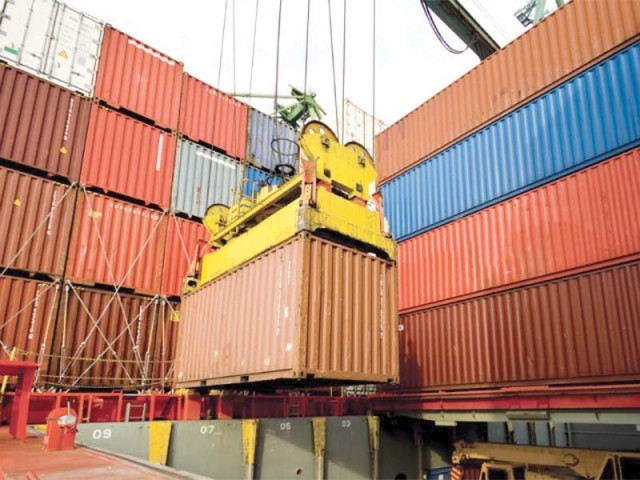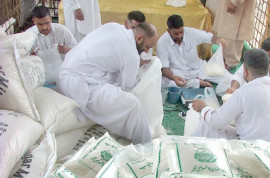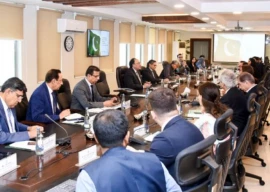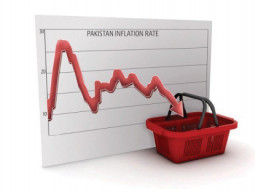
Although the impact of the depreciation in December 2017 may not have yet been fully reflected in the trade data, the gains in the shorter run have been significant.
According to the data provided by the Pakistan Bureau of Statistics (PBS), exports in December 2017 have increased 14.8% in dollar terms over December 2016. Further, exports between July and December 2017 have increased 11.2% over the value reported for the same period in 2016. However, the increase in exports does not imply a reduction in the trade deficit. On the contrary, the trade deficit is increasing.
Rupee has weakened against all major currencies
The devaluation of the currency and regulatory duties have failed to contain the growth of imports. The growth in imports has exceeded that of exports, raising concerns that Pakistan may yet again report a higher trade deficit than the previous year.
As both exports and imports increase, the trade openness of Pakistan (which measures the proportion of exports and imports to total GDP) increases. Pakistan, with trade openness at a quarter of its GDP, has one of the lowest levels amongst the larger economies of the region. Bangladesh, China and India all report trade openness at around 40%. Therefore, Pakistan is not currently as exposed to international trade as its neighbours.
However, the recent surge in the level of exports and imports does suggest that Pakistan will have to adopt trade policies that not only push for a consistent expansion in its export base but also promote the right mix of imports involving capital and raw materials to boost domestic production. In this regard, it is essential that an effective trade policy is considered by the Pakistani policymakers.
Global trade breakdown
The largest export destinations of Pakistan in 2016 were the US, China, UK, Germany and Afghanistan. According to the data borrowed from Trademap.org, more than 44% of the total exports from Pakistan were destined to the five aforementioned countries in 2016. The top products exported by Pakistan include made-up textile articles, apparels, cotton, and cereals. Majority of the textile products are destined to the US and the EU. Unfinished cotton products such as raw cotton, yarn and fabric are destined primarily to China, Bangladesh and Italy, while rice is mostly exported to China, Eastern Africa, UAE and Afghanistan.
The largest source countries for the imports into Pakistan were China, UAE, Indonesia, the US and Japan in 2016. The aforementioned countries account for more than 55% of the total imports into Pakistan. According to the data provided by the State Bank of Pakistan (SBP), there was a surge in imports from several important trading partners between July and December 2017 compared to the imports in the same period in 2016. The imports of Pakistan are mainly concentrated in mineral fuels, electrical and non-electrical appliances, iron and steel as well as motor vehicles.
SBP’s first quarterly report
The first quarterly report 2017-2018 published by the SBP includes a special section on the opportunities for industrial transformation provided by the China-Pakistan Economic Corridor (CPEC). The report clearly states the utmost importance of developing Special Economic Zones (SEZs) within Pakistan is to improve the ability of firms to produce more goods at a more competitive rate.
As China moves away from mass production of lower value-added products and towards the manufacture of more sophisticated and advanced products, it provides opportunities for Pakistan to invest in the production of the former in order to fill the void. The SBP report lists low-end textile manufacturing, mobile and laptop assembly and fixing, basic food processing as well as catering for the demand of basic consumer goods in China as the possible spillovers and transfers that can be experienced by Pakistan.
Further, the report states that Pakistan can benefit from the inflow of technologies in the steel industry, the automobile industry as well in the chemical, plastic and petrochemical industries.
The report also calls for a complete overhaul of the current tariff structure as it suggests that the industrial structure not only has an anti-export bias but is also ineffective. The report seeks liberalisation in the export-oriented sectors as such policies would promote the enhancement of quality in production and make the products more competitive globally.
Using Yuan will help provide better conditions for bilateral trade: Chinese spokesperson
On the other hand, the report suggests a reassessment of the free trade agreement with China, indicating that it has been one-sided as it has benefitted China more than Pakistan. It asks for a renegotiation that includes more supportive concessions as enjoyed by ASEAN countries. However, the report does mention that the domestic SME sector failed to compete against Chinese inflows of consumer goods. Therefore, it is essential that policies are introduced to improve the capabilities of the SME sector.
One of the biggest challenges to the exporters is the non-tariff measures (NTMs). Exporters are required to comply with technical measures, standards as well as custom procedures in the destination market that can impede trade and prevent them from exporting their products.
For instance, the exports of agricultural products are likely to face both sanitary and phytosanitary (SPS) measures as well as technical barriers to trade (TBT). Although tariff concessions have been offered to Pakistani exporters by its major trading partners, the NTMs may exclude several potential exporters and lower the export value.
Further, exporters must be better facilitated in terms of not only easier access to inputs, capital investments and financial markets but also be able to establish exporter networks in their destination markets. It is essential that exporters are able to promote their products in the potential markets. Therefore, the government must introduce long-term policies that can support the industrial transformation, and consequently the exports, as discussed in the SBP report.
The writer is Assistant Professor of Economics and Research Fellow at CBER, IBA
Published in The Express Tribune, January 29th, 2018.
Like Business on Facebook, follow @TribuneBiz on Twitter to stay informed and join in the conversation.
















COMMENTS
Comments are moderated and generally will be posted if they are on-topic and not abusive.
For more information, please see our Comments FAQ